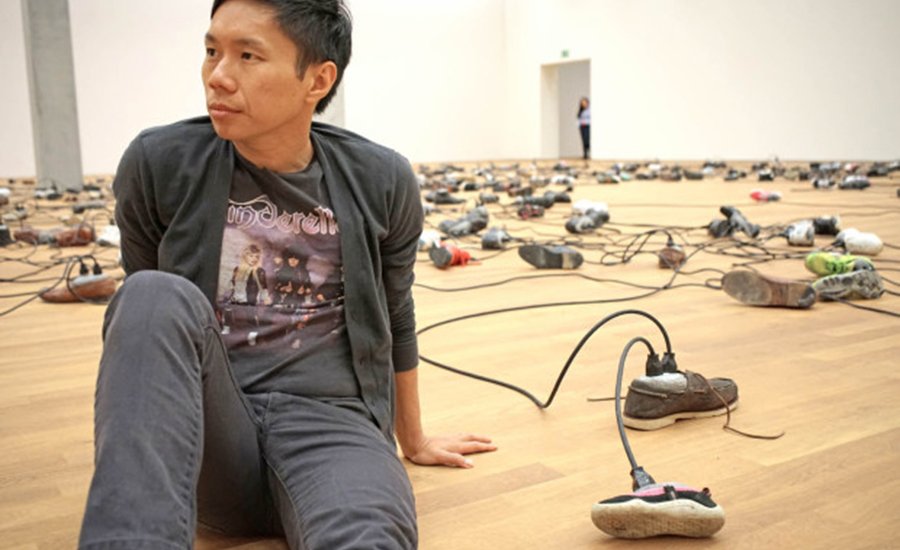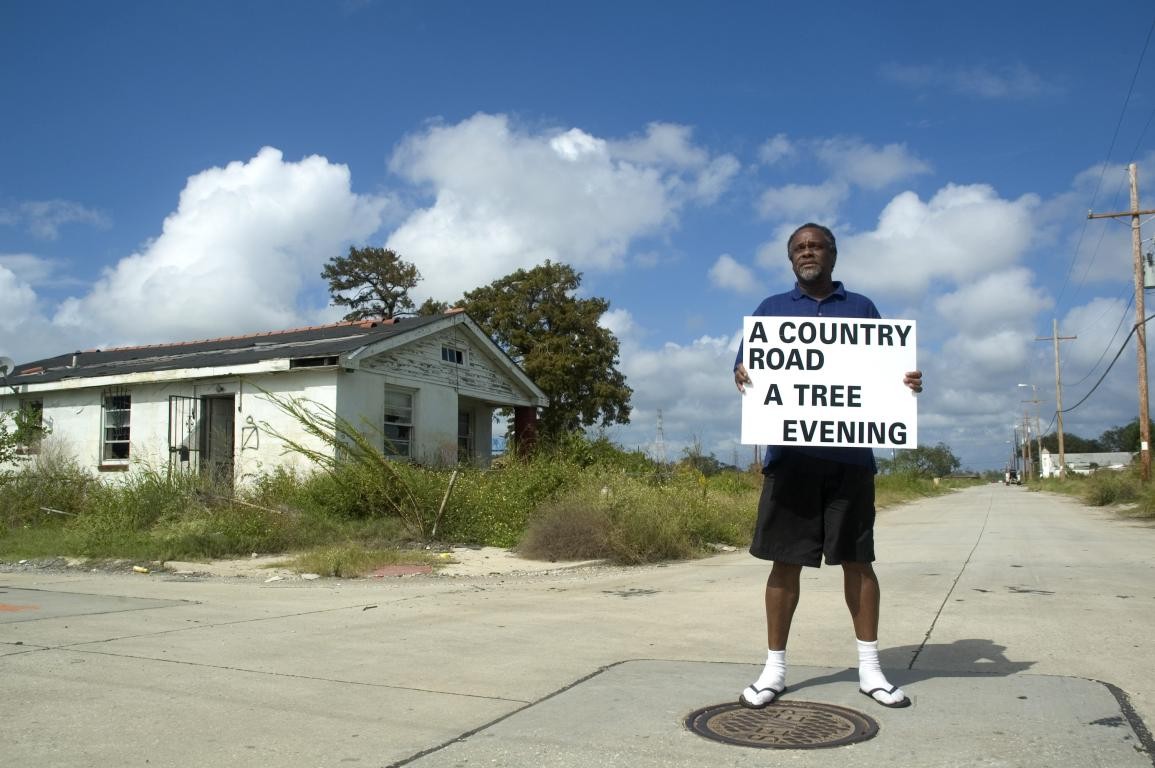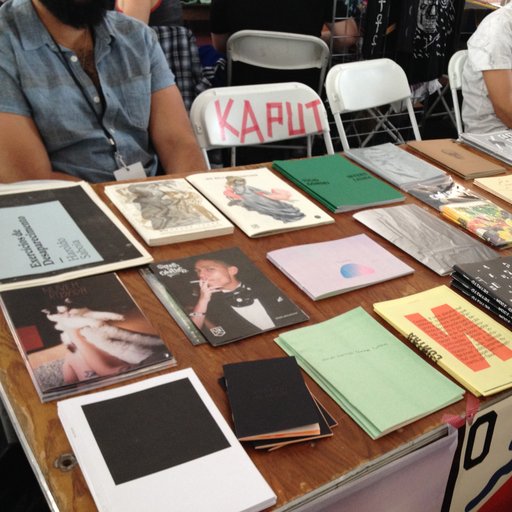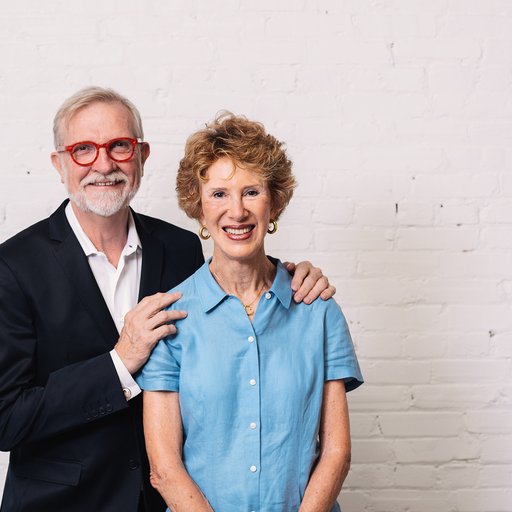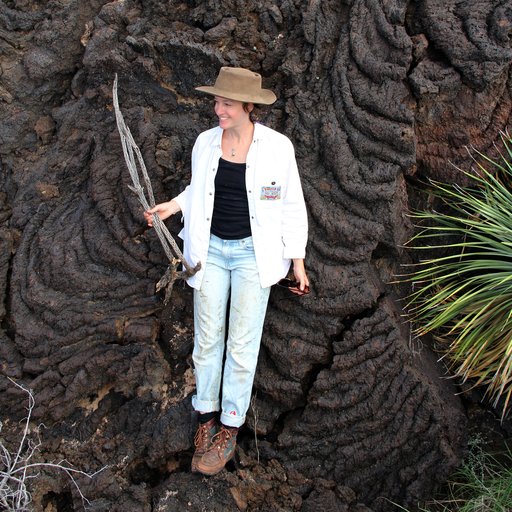This interview was excerpted from Phaidon's newly released Artists Who Make Books , edited by Andrew Roth, Philip E. Aarons, and Claire Lehmanns.
 Phaidon's
Artists Who Make Books
is avaiable on Artspace for $125
Phaidon's
Artists Who Make Books
is avaiable on Artspace for $125
An inveterate provocateur possessed of a dazzling intellect, a deeply felt sense of political ethics, a wicked sense of humor, and a highly refined bullshit detector, Paul Chan is probably best known for his videos and projections. But from the beginning of his artistic career, he has also been intimately involved with text— from artworks that engage with language as both signifier and system to a robust writing practice often employed to extend and elaborate on the interleaving networks of political and philosophical ideas that animate his work. Chan has consistently forged linkages oblique and direct between books and other aspects of his practice, creating publications that have alternately functioned as clear discursive adjuncts and superficially unrelated supplements to museum exhibitions and independent projects. But whatever form Chan’s artworks take, questions of language—and also of exchange, distribution, and dissemination—are never far from his mind, and so it makes sense that when he took a hiatus from art making in 2009 (he has since resumed), he redirected his creative energies toward publishing.
Badlands Unlimited, the imprint he founded in 2010 and now runs with Parker Bruce, Ian Cheng, Micaela Durand, and Ambika Subramaniam, has brought out a wildly heterogeneous roster of publications in both print and digital formats—artists’ books, theoretical tracts, literature and poetry, historical materials, erotica. It’s a list that reads like art by other means for Chan, an approach that imagines various apparent oppositions—deliberation and desire, the poetic and the political, the lighthearted and the deadly serious—as generative dialectics; vectors that, when coaxed into strategic intersection, can be made to produce the friction necessary to wear away revelatory holes in the fabric of the settled. In February 2016, Chan spoke with Jeffrey Kastner at the Badlands offices on the Lower East Side of Manhattan.
Jeffrey Kastner: Before we start talking about Badlands Unlimited, I wanted to ask you about the role of publication-based work in your art making. We first got to know each other more than a decade ago when I wrote about The People’s Guide to the Republican National Convention , the alternative map of New York City that you made with the collective the Friends of William Blake back in 2004. And in doing research for our conversation today, I realized I have several other of your books in my library, including The Shadow and Her Wanda , a very unusual, very sophisticated children’s book you made along with your New Museum show from 2007, and a beautiful book you made to accompany the production of Waiting for Godot that you mounted for Creative Time in New Orleans that same year. Bookwork has always been a thread in your practice.
The publication work is an extension of media work, as far as I’m concerned. I grew up at a time when people made zines and single-channel videos, and that’s what I studied in school. I’ve always made publications and other kinds of works on paper. One way I think about it is that whether I do it on the page or on the screen, I may be first and foremost a file maker. And these files, as we know, can manifest in different physical, conceptual, and aesthetic forms. And so as a file maker, the question then becomes, what is most fitting for the file? When we made The People’s Guide to the Republican National Convention , for instance, we had a long discussion about whether it should just be a website—the web was open, it was free—but we realized it wouldn’t be apt for what we wanted it to be, which was something that, in the days before smartphones, people could refer to and use on the streets. The experience of reading is different in different media. And as people started reading more and more on screens, it seemed like the moving-image work was melding fairly seamlessly with other work that uses a screen. I wouldn’t say it’s entirely on one continuum, but I think the screen is essentially how we live and breathe in the twenty-first century.
What are the differences between the page and the screen, between reading a book, say, and looking at media on a device of some sort?
It’s about quality of attention. To me, a book isn’t defined by what it’s made of or how it physically exists. It’s defined by a certain quality of attention. A book is a space for a certain kind of attention. And it just so happens that the printed book somehow sets us in the mood or the way of thinking—maybe even being —to enable us to focus on the page. The physicality of it sets us up for a particular kind of attention, one that I actually first understood through video work—certain video works set me in a certain mode of attention, like I’m reading, although I’m not reading, I’m just experiencing. For instance, watching a Chris Marker film sets me in this kind of mood: I’m not bored, I’m not not bored. I’m just sort of in this condition of floating attention that’s very unique, and that’s how I understand great works. Great works are differentiated from other works by the way in which they help me focus, not even on them necessarily but just the way they generally frame and direct my attention.
Is it a function of form? Of content?
It’s hard to say. We just know that when we read a good book, we’re gone, right? And now younger generations can have that feeling without the physical book. This is one of the reasons we do e-books. It’s not necessarily about the form; it’s about the audience. We have an editorial and publishing mission to reach younger people, in their twenties and thirties. That’s our goal—to publish books that expose them to avenues of culture that they may get a hint of through school or whatever, but not what I would consider an interesting critical perspective. So, for instance, with the Marcel Duchamp book [ Marcel Duchamp: The Afternoon Interviews (2013)], all that information is already out there; it’s not new. But we imagined him within a form that younger people could digest and did it in a way that makes him relevant to their lives today.
And that’s one of the Badlands titles that exists as both a printed book and an e-book.
And both formats do equally well. Look, I’m from Omaha, and when I was growing up, the best bookstore in my hometown was at the airport. I don’t know if that’s still true—it may be—but I do know that a fourteen-year-old kid probably has a smartphone, and they can download one of our books on Kindle or iTunes or Amazon. And they can read it with one hand, walking to school with Duchamp in their hand. There are many reasons why we do e-books—obviously it’s cheap, but it’s really about distribution. I can reach that kid in Butte, Montana. For me, that is very important.
Speaking of distribution, I had an interesting experience this morning: I wanted to look at the Badlands books I had bought from iTunes, but the iBook store was down for about two hours, so I couldn’t get them out of the cloud.
[ Laughs ] That happens. Sometimes they go down for no reason; sometimes they get pulled for no reason; sometimes they get held back for no reason.
Do they ever get held back or pulled for an actual reason?
Sure.
Like what?
Sex!
Aren’t the New Lovers books on iTunes?
They are. But words that evoke sex don’t matter; it’s only images. It’s the affect—Apple is more afraid of visual sexualization than semantic sexualization. We haven’t had trouble with New Lovers . It’s been some of the artists’ books—because of the imagery and also because of how we make them. There are people who go through and vet each book in their system. What is this? Why is this image cut off? Are you sure the page number is right here? I think that part of the pleasure of doing the e-books is to diversify the ecosystem of what’s being made for the e-book platform. I’m not aware of anyone who’s consistently made experimental artists’ e-books for distributed e-book systems. I mean, first of all, it’s ridiculous. It takes resources to do it, and for what profit? But I think for me, it’s like that Bertolt Brecht quote—I’m not sure where it’s from—where he says you shouldn’t start with the good old things, but with the bad new things. And there’s nothing more maligned than the e-book. Especially in contemporary art. So I thought, why not start there? I’ve been around enough that people know I’m not going away—I will continue to do experimental books. And as for Apple, they constantly have to contend with the fact that they get these e-books that they don’t understand.
So there’s a dialogue with them?
You upload the book for the process of publication. And a week later, you check back, and if it’s not up, you go to the account and there’s usually a flag or something. We typically get five to seven flags per book.
They flag specific things and ask you to change them?
They ask us why we’ve done things the way we have. Why is there a nipple here? Why are the page numbers wrong? We did a reissue of Bernadette Corporation’s Made in USA (2012)—it’s basically a scan of the physical magazines, but in e-book form so you can access them. And the page numbers were all wrong. And Apple said, “The page numbers are all wrong.” Essentially any flag from Apple asks, “Don’t you know you’re doing it all wrong?”
“Did you know that you spelled What wrong on the cover?”
Yeah. “What is your intention for this?” “Are you sure you want this?” I don’t find it annoying; I find it fascinating. And, in many ways, not unlike the distributed systems I’ve come to understand in other media.
Are there independent platforms—not Amazon, not Apple?
Sure. Like all technology platforms. Do you know O/R Books? John Oakes is sort of a publishing mentor to me. O/R does it independently—they don’t go through Apple or Amazon. You can download their e-book files directly from their website, and they show you ways to load it onto your Kindle or iPad. They’ve made a principled stance, and I applaud them for it.
Are people bringing things to you, or are you commissioning?
For these, we asked. We’ve wanted to do something with Georgia for a while, but it never worked out until now. We approached Rachel. The idea is that the longer you do it, the more people recognize that you’re trustworthy enough to bring stuff to. Maybe that’s the name of the game, to keep going until people realize that you’re for real . That might take a lifetime, but I think it’s worth trying. It’s the same with New Lovers : we started by reaching out to writers, but now writers are coming to us.
Speaking of New Lovers , all the authors have been women. Is there a programmatic principle in that, or did it just turn out that way?
It just turned out that way, and now that we realize it, it’s the way we’re going to keep it. When we started, we got submissions from every kind of person. But the people who wrote the best ones tended to be women. And then when we published the second set of three, we thought maybe we should keep it all women, because it was consistently the case that the women writers wrote better.
What does “better” mean in the context of erotic fiction?
It means that we enjoyed reading them more. It’s strange that we publish erotica, because we don’t read erotica. And the writers who write for us have never written erotica before, so everyone’s an absolute beginner. There’s a real pleasure in that for me.
Well, it dovetails with concerns that have been in your work for a long time—questions of eros, the figuring of sexuality, of desire.
I think so. I also think it’s the right time. There are so many things in the world that you can sink your teeth into politically—the world is what it is, a tragedy and a farce at the same time. And to me there’s nothing more interesting, more farcical, more tragic right now than sexual politics—from ISIS to Boko Haram to the rape culture stuff at universities. New Lovers is a way for me to be part of the conversation insofar as it can be a platform for younger writers to talk about what is and isn’t pleasing to the new generation. The ones that we publish tend to treat sex and pleasure in a relational way. And by that I don’t mean husband and wife, or boyfriend and girlfriend, or girlfriend and girlfriend—I mean that they treat sex as a knotting point, the Lacanian idea of sex being what it is because it’s knotted with so many things. I mean, I want to publish as hot a book as possible so that everyone on the L train reads it. But it turns out that the writers we work with want to say other things while they’re writing the sex scene, and it’s been great that way. One of our books got reviewed, and the writer really honed in on the fact that it was not only a sci-fi sex fantasy but also a critique of surveillance. And we didn’t tell the author to do that—she wanted to do that. I think that’s a much more pleasurable and, frankly, contemporary way of understanding what is and isn’t pleasing today. That’s what I want.
Approaching sexuality in a way that opens up onto other issues is certainly not an aspect of conventional pornography.
That’s right. But we know that’s what sex is like anyway. If erotica is a kind of fantasy, then maybe what is fantastical can be expanded just a little bit—deepened—to allow it to say other things. I’ve learned a lot from it.
[related-works-module]
Can we talk about your decision to retire from making art? What did that mean exactly?
It means that I stopped making or showing new work for a period of time. It means I got off the train. It means that I declined every invitation to show new work in institutions of any kind, and I turned down all commercial opportunities for an extended period of time.
But that’s over now.
With the Schaulager museum exhibition [in Basel, 2014] and the Hugo Boss exhibition [at the Guggenheim Museum in New York, 2015], I would say it’s over.
At the Schaulager you showed the complete Volumes (2012)—an array of 1,005 book covers that you overpainted. And you made a major book project about the work as well, New New Testament (2014).
Yes, I showed all of Volumes there, and for probably the last time. It’s terrible—nobody wants to show it! [ Laughs ] Let’s face it, Jeffrey, I’m a terrible artist. Questionable at best. Why do you think I started publishing as the day job? I knew the gravy train was over. I had to find a plan B.
So it was more a crisis of faith with the making of art than with the business?
It’s hard to know where business starts and ends sometimes. We’ve known each other for a while; you’ve seen how the contemporary art world is. I was very grateful—I had a crazy-great ride, but I wanted to get off that ride. Do you know Fred Ho? He was an anarchist Marxist jazz musician. Fred was great. He was crazy and a little dogmatic—a lot dogmatic. Anyway, he used to teach a class in New York called “How to Survive as an Artist without Losing Your Shirt or Your Dignity.” It was basically an economics class, and he taught you how to add up how much you need to live on. I never took the class, but I remember talking to Fred about it, and at that point in my life I basically did the numbers and determined the amount I needed to live, so I asked myself, “Why am I killing myself thinking about all this other stuff?” And that’s when I left. I mean, I didn’t go to Montana or anything; I just stopped showing work, stopped making work. And it was great. All I did was clean my studio. I was happy to help people show work that was already made. But everyone is always looking for new stuff, and I just said, “No, thanks.”
But there are through lines in your practice as a maker of artworks and as a maker of books. You didn’t change your way of thinking about discourse, the way you engage with ideas. Is this just a continuation of art making by other means? Or is it a different thing entirely?
I am as questionable a publisher as I am an artist, but I’ve learned a lot. You learn on the job, and maybe that was the most important thing.
That you needed to find something new to learn.
And also expand my circles. I think over time, inevitably perhaps, the network of people and groups you work with ossifies, and you need to find other people to engage with. Now, six years later, I can talk to my gallery—but I also have to talk to my printer in Michigan. I have to talk to the shipper to figure out if I have to pay the extra fee for them to drop off the books at the storage space. And they don’t care who I am, and that’s perfectly fine with me. I’m happy about that. Or when I talk to young writers who only know me as a publisher—they don’t even know I make work. And I gladly give up that imprimatur of authority, of being somebody , because I find it noxious. That may just be a temperamental thing. So here [at the Badlands office] I meet with copy editors and writers; they don’t give a fuck who I am as long as I give them the check. Or downstairs. We opened a retail outlet downstairs.
You’ve been doing this for six years now. Have you seen changes in these infrastructural and distribution conditions that have had positive or negative effects on the business? To someone who doesn’t closely follow the e-book world, I don’t get the sense that there’s been a big leap in these things, but I may just be missing it.
Economically, it’s plateaued. When we started, it was trending upward and people were excited about the prospects of making and selling e-books, and also scared, because the field was growing at such a rate that there was a sense that e-books would make paper books extinct. That was certainly the case in 2010, 2011, but now in 2016, we know that the e-book isn’t going to make paper books extinct. Paper books are alive and well, they’re not going away, and the e-book market, insofar as I understand it, never really had that exponential rise people expected. People are not as afraid of e-books, and they’re accepted, and I think that’s interesting. We have made an effort to publish more paper books, because we realize it helps our e-book sales. I perversely think of our paper books as advertising for our e-books. Not all of our books are both e-books and paper books, but a majority of them are both. The more experimental ones tend to be just e-books or limited editions.
My impression of e-books back in the early days was that they would basically be paper books that were digitized. But Badlands has worked quite successfully to challenge what a book is in an electronic context—like How to Download a Boyfriend (2012), for example, which looks to me like an exhibition in a digital environment—to the point at which I begin to wonder if book is even the right word for what I’m seeing when I look at your e-books.
We consider them books. In a way, in a very real way, a book isn’t a book unless it’s read and distributed. For me, in addition to that quality of attention I was talking about, there’s also the question of the book’s ability to be distributed. There’s nothing sadder than a book sitting in a warehouse. It should be in a bookstore, or on someone’s bookshelf. If it’s not circulating, it’s not a book. Its socialization is built into the form. So because it’s in an e-book distribution system, it’s a book.
So far, more traditional publishers seem to have been putting out e-books that look like paper books—they’re not trying to explore what else a book might be, how it might otherwise function, how it might be used and read and shared, what it might ask of the reader.
That’s because they don’t have a historical understanding of their place. I think the history of publishing tells you that you need to pay attention to all those aspects of reading, of use. I read a great book a while ago, The Book in the Renaissance (2010) by Andrew Pettegree, and it’s incredible because it tells you about the history of the business of publishing. It’s amazing to learn how books moved over time, seeing the relevance of font makers, the relationship of printing centers in Europe to rivers and religious centers, to see what worked, what sold, what people actually read and remembered. I mean, talk about relational aesthetics and social practice! There’s nothing more interesting than the social practice of publishing since Gutenberg, and Pettegree gave me perspective on the e-book stuff, because when Gutenberg first premiered his press, people were completely pissed. They didn’t trust him because they said people could make books by hand with more finesse and fewer errors than the press. Their fears about the printed book were the same fears people had about e-books. It’s strikingly similar.
Which of your books has had the best commercial response?
Duchamp, hands down.
Which in some ways is pretty conventional.
Totally, but it hit the sweet spot of publishing for a younger readership, introducing them to something that’s already out there, accessible, iconic, but also twisted. I think it’s a beautiful book.
Where do you sell most of your books?
Printed books go through D.A.P., and the e-books go through Apple and Amazon.
Where does D.A.P. place the books?
Depends on the book buyers—we have to do a bit of a dance to get them to talk to the book buyers at big places like Barnes & Noble. We call bookshops ourselves. It’s drudgery, but it’s part of the business. The challenge is to be cunning enough to survive whatever changes come.
Has working as a publisher reinvigorated your interest in making books yourself?
It’s more the case that it has given me more leverage with institutions wanting to make books and exhibitions with me. One of the other models for Badlands was the independent hip-hop labels in the 1990s. I’ve talked about this before, about how I grew up with rap, just like everyone else, and realized rappers were starting record labels. I thought it was a vanity thing—they just wanted to be the boss—but I realized later on that it was a critical economic decision. They wanted to own their own publishing, the rights to their own songs, because up until then they didn’t. So in a way, Badlands is my way of starting my own label so that I can control my own publishing. Like the Schaulager book. It’s a once-in-a-lifetime opportunity, but part of the deal was if they were going to do a book, we were going to copublish it. I wanted a say in all aspects of the production and distribution. And to their credit, they trusted a no-good amateur publisher like me to copublish it. So I had a say not only in terms of what was written about me, how the images were going to look, but also the distribution strategy, the number of copies, where they go. Those are all aspects of publishing that we need to pay attention to so that the books we make don’t sit in a warehouse.
I know so many artists who are so proud of their book, and it just sits in a warehouse or some museum storage room. You know what I mean? Artists of every caliber I’ve talked to have had that experience. That’s not to say that the museums don’t care about the books; it may simply be that they don’t have the wherewithal or resources to treat them in the way we as artists would want them to be treated. By starting a press, I provide a platform for artists and writers and protect them in the way I’d like to be protected from well-meaning institutions that may not have the resources or the mindfulness. Because I don’t know who doesn’t want a book. Some artists don’t want to show, some don’t want to sell work, some don’t want their works written about, and that’s fine. But I don’t know anybody who doesn’t want a book about them. And so if that’s true, then the question is how that book is going to come about, and if it’s going to live the kind of life it ought to. That is, if you believe that there is a social life to a book, and if it is going to be a real book and not some weirdo artist’s edition—which is cool too, I’ve made those, but that’s not my ambition. I didn’t grow up making artist’s books, I grew up as a reader of books that I stole from libraries or airport bookstores.
RELATED ARTICLES:











